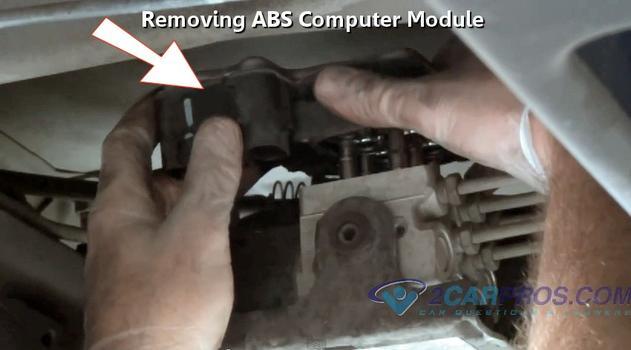That button on the combination valve moves out when the front brakes get fluid pressure. That is actually the "hold-off" valve for disc brakes when you have drum brakes in the rear. It delays the application of the front calipers until the rear shoes have had time to expand out to the drums. You don't have to do anything with that valve. It was only on some older Fords that gravity-bleeding wouldn't work on the front because the weight of the brake fluid wasn't sufficient to get past that valve. They even made a special tool out of a piece of spring metal to clip on and hold that valve open.
I'm not aware of any way to open the valves in the hydraulic controller without a scanner. Once you access the function through multiple drop-down menus, the procedure only takes a few seconds. The scanner displays which bleeder screw to open, then you press the brake pedal and hold it until it tells you to close it and move to the second bleeder screw. On vehicles that use stored brake fluid under very high pressure, you just hold the brake pedal until it's done, typically a few seconds. On other vehicles, the scanner may have you pump the brake pedal a few times.
The order you bleed the wheels is totally irrelevant. I know some service manuals tell you a certain order, but I've been doing brake work since the early '80s when it was common to rebuild calipers and wheel cylinders with a standard brake job. In every case, the wheel I bled first was the one I was standing closest to. I did almost all gravity-bleeding with no helper pushing the brake pedal, no pressurized bleeder ball, and no other special tools. The only ones I can't bleed myself are those that require the scanner.
Consider asking about a scanner at your local auto parts stores. Many of them rent or borrow tools. In my city, they make you buy the tool, then you get a full refund when you take it back. If you decide to keep a tool, you still take it back, then they order you a brand new one. Also ask at some independent repair shops if they have an older scanner they'd be willing to loan out. They often have scanners they'd like to sell so they can invest in something newer. I have a Chrysler DRB3 for all of my vehicles, but those went obsolete between 2004 and 2008. A lot of independent shops bought them because with an extra plug-in card, they did emissions stuff on all car brands sold in the U.S. You can find these on eBay too.
I also have a Snapon Solus Edge for my newer truck that isn't supported by the DRB3. I have a suspicion there might be less-expensive tools available just for bleeding ABS controllers, but I've never looked into that. The people to ask are those who drive the tool trucks around town and visit each shop once a week. The mechanics at any repair shop can tell you who they are and when they show up there. Someone will probably have their business cards too. The common ones are Mac, Matco, Cornwell, and Snapon.
The first time I ran into this was at a friend's body shop. He specializes in rebuilding one and two-year-old smashed Dodge trucks. The vehicle was a 2012 Grand Caravan. The rubber flex hose to the right rear caliper got ripped off by the huge forklift that loaded the van onto his trailer. There was plenty of brake fluid coming out when we tried to bleed it, but the brake pedal went all the way to the floor. Once I explained the bleeding procedure, (he has the same model Snapon Solus scanner), it took less than a minute to complete the job.
Tuesday, October 22nd, 2019 AT 8:39 PM


